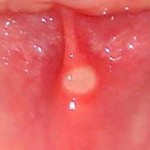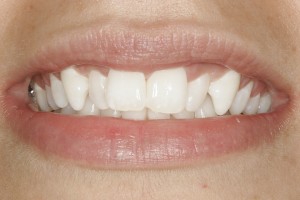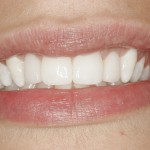I’ve had a number of patients say to me, “Doctor, my dentist says I should get my heart checked out, what does a dentist know about hearts?” Then after some tests, I have to tell my patients, that, yes, their dentist was right, they have a heart problem. There is definitely a gum-heart connection and that connection is inflammation. Untreated chronic inflammation can lead to severe health complications.
This is how it happens. When you consume anything, residue collects on your teeth, and this residue forms plaque. Plaque is a sticky deposit of mucus, food particles and bacteria formed at the base of your teeth within hours of eating. If you don’t remove the plaque it can cause gingivitis, the collection of plaque in pockets between swollen gums and the base of your teeth.
Gingivitis is also the source of bad breath. Left untreated, gingivitis can lead to periodontal disease; also know as gum disease. Your mouth has the highest concentration of bacteria in your body under normal conditions, but if you have gum disease, the bacteria count gets even higher. Inflamed gums present a good portal for bacteria to enter your bloodstream and move on to your heart. There it can damage your heart walls or values. It might also provoke blood-clotting, leading to stroke or a heart attack.
The Good News is – You Can Stop Gum Disease At Your Bathroom Sink
Sadly, gum disease is one of the easiest preventable diseases out there. Yet some 50 percent of the adult population has gum problems. Good dental hygiene can eliminate or slow gum disease and all it takes is making a conscious effort to brushing your teeth after every meal and flossing before you go to bed.
Here are the steps recommended by the American Dental Association
Brushing Your Teeth
- Place your toothbrush at a 45-degree angle against the gums.
- Move the brush back and forth gently in short (tooth-wide) strokes.
- Brush the outer tooth surfaces, the inner tooth surfaces, and the chewing surfaces of the teeth.
- Use the “toe” of the brush to clean the inside surfaces of the front teeth, using a gentle up-and-down stroke.
- Brush your tongue to remove bacteria and freshen your breath.
Flossing Your Teeth
- Break off about 18 inches of floss and wind most of it around one of your middle fingers. Wind the remaining floss around the same finger of the opposite hand. This finger will take up the floss as it becomes dirty. Hold the floss tightly between your thumbs and forefingers.
- Guide the floss between your teeth using a gentle rubbing motion. Never snap the floss into the gums.
- When the floss reaches the gum line, curve it into a C shape against one tooth. Gently slide it into the space between the gum and the tooth.
- Hold the floss tightly against the tooth. Gently rub the side of the tooth, moving the floss away from the gum with up and down motions.
- Repeat this method on the rest of your teeth. Don’t forget the back side of your last tooth.
Nutrients for a Healthy Smile
Nutrition plays an important role in gum health. Crunchy fruit and vegetables can actually clean your teeth as you are eating, and the acid delays the formation of plaque. Vitamins A, C, D, E and K and the B vitamins; folic acid; biotin; choline; calcium; zinc; and magnesium have all been found important for your oral health.
According to Aim International, two studies suggest that coenzyme Q10 and aloe are also helpful to gum health:
Two dietary supplements, coenzyme Q10 and aloe vera, are helpful to gum health. Coenzyme Q10 (CoQ10) may help with periodontal pocket depth. In early research, Dr. Edward G. Wilkinson, of the U.S. AirForce Medical Center, gave patients 50 mg of CoQ10 a day. His patients experienced reduced periodontal pocket depth. Wilkinson said, “Treatment of periodontitis with coenzyme Q10 should be considered as an adjunctive treatment with current dental practice.” Later studies have reconfirmed this. Hanioka, et al., say “These results suggest that the topical application of CoQ10 improves adult periodontitis” (Molecular Aspects of Medicine. 1994. 15 Suppl)
Aloe vera is known to kill bacteria. Dr. Eugene R. Zimmerman and Dr. Ruth A. Sims have (Aloe Vera of America Archives, Stabilized Aloe Vera, Vol. I) noted that aloe does have bactericidal properties. This means it may be useful in periodontal disease, which is a bacterial infection. Simply rub the liquid or gel on the gums.
When you take care of your gums and teeth, you are helping yourself on many levels. Superficially, you will retain your beautiful, white-toothed, smile. Your breath will smell sweet. Moreover, your heart and arteries will have an added protection against the onslaught of bacteria.
Mark Rosenberg, M.D.
Institute For Healthy Aging
http://www.vitalmaxvitamins.com
 If you snore at night or suffer from symptoms like irritability, difficulty concentrating, morning headaches, or daytime drowsiness, you may have sleep apnea.
If you snore at night or suffer from symptoms like irritability, difficulty concentrating, morning headaches, or daytime drowsiness, you may have sleep apnea.






